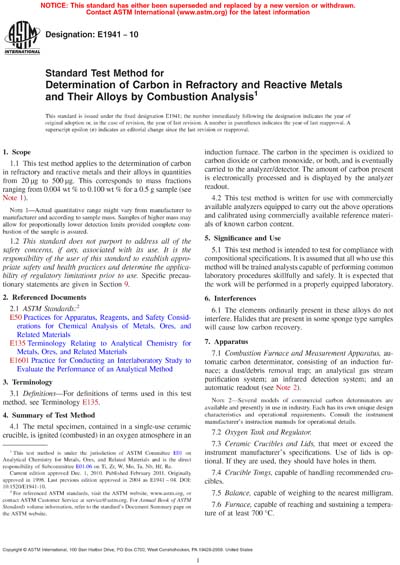Historical
ASTM E1941-10
Standard Test Method for Determination of Carbon in Refractory and Reactive Metals and Their Alloys by Combustion Analysis
1.1 This test method applies to the determination of carbon in refractory and reactive metals and their alloys in quantities from 20 μg to 500 μg. This corresponds to mass fractions ranging from 0.004 wt % to 0.100 wt % for a 0.5 g sample (see Note 1).
Note 1—Actual quantitative range might vary from manufacturer to manufacturer and according to sample mass. Samples of higher mass may allow for proportionally lower detection limits provided complete combustion of the sample is assured.
1.2 This standard does not purport to address all of the safety concerns, if any, associated with its use. It is the responsibility of the user of this standard to establish appropriate safety and health practices and determine the applicability of regulatory limitations prior to use. Specific precautionary statements are given in Section 9.
Content Provider
ASTM International [astm]






